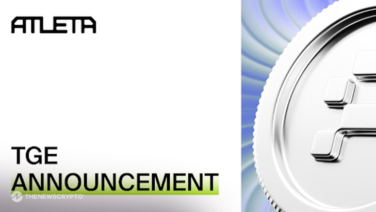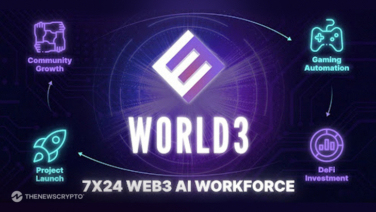- Onboarding users and an insufficient number of builders are some of the key challenges for Metaverse and Web3 space.
- Followed by its virtual airdrop, ZTX records 200,000 new user wallets in a day.
ZTX, a prominent builder of metaverse and web3 platforms, has just completed a rapid and highly effective onboarding campaign over the weekend. With a limited-edition virtual hoodie airdrop, ZTX has attracted more than 200,000 new user wallets on Arbitrum, the Ethereum scaling solution that is known for its high-throughput, low-cost transactions.
The hoodie can be used in both legacy Web2 and newer Web3 settings and exemplifies the ZTX’s ethos of delivering interoperability that projects across the board hail as the solution to the world’s tech challenges but few have adequately addressed.

Onboarding users has been the most critical challenge for many virtual worlds and Web3 platforms in recent times. Without a sufficient number of users participating in online offerings and creators building those offerings, many projects have fizzled out all too quickly. Too much of the world’s online activity still takes place in the Web2 space, and Web3 likely still needs some time to mature. Why not combine offerings or functionalities that cater to both?
That’s exactly what ZTX did with the release of its virtual collectible. The platform has been gradually building out its interactive and immersive virtual world over the past year. Packed with novel experiences of all kinds, and designed with user-focused utility and benefits from the ground up, ZTX is leading the march toward delivering a fully functional and self-sustaining virtual world for creators and users alike.
Confering Real Utility To Web3 & Metaverse Worlds
The ZTX onboarding campaign was so successful that over 20 creators from its legacy platform – creators who collectively boast over 8 million followers — created content and hosted livestreams to educate their followers about ZTX’s on-chain expansion. These are the users and creators who will pioneer the Web3 future by leading initiatives during the overlapping transition stages between Web2 and Web3.
The type of interoperability boasted by ZTX comes with numerous benefits. First and foremost, it allows creators and users to enjoy the best of both the Web2 and Web3 worlds without having to sacrifice participation, activities, or opportunities in one for those in the other. Second, it allows for quicker onboarding, better user education, and the kinds of streamlined offerings that users are accustomed to instead of relying on steep learning curves and high dropoff rates that are common in Web3 due to the perceived complexity and user unfamiliarity with Web3. Finally, it provides the perfect on-ramps for bringing people into the Web3 world by introducing them to wallets, blockchain-based tokens and rewards, and the digital asset-based future that we are collectively heading toward.
As ZTX continues its journey of bringing innovative experiences to new audiences, it is primed to launch its Genesis Home Mint — a collection of 2,000 bespoke NFT homes with built-in utility and functionality — on OpenSea on August 30. This mint, which follows a sold-out presale, will be the basis of the economic engine for many users of ZTX since these homes can be used in a variety of ways and can help users establish their bases and earn real rewards. The mint will precede the release of ZTX’s updated private beta of its on-chain platform, which is scheduled for September of this year. Earlier this month, ZTX announced the results of a rounding round. Led by Jump Crypto, the project raised $13 million to do exactly what it is doing – advance its Web3 virtual world, help creators, and onboard users fast.








